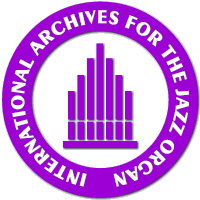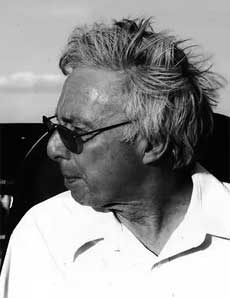
The Jazz Organ Scene
USA

|
Harold Budd
Harold (* 1936 in Los Angeles, CA) had music ingrained from childhood. The Black culture
had an enormous impact on Harold, especially jazz music and bebop, and he could be found
in his teen age years playing drums in bars and jazz clubs in South Central Los Angeles.
After high school, Harold went to work at Northrup, working a blue collar job to support
the family. At 21, he decided to get himself an education and enrolled at Los Angeles Community
College for a course in music theory. "From that moment on", he recalls, "I had an insatiable
appetite. Harmony, counterpoint, Renaissance music: I really heard it for the first time."
After a stint in the army where he played drums in an army band with avant-garde jazz saxophonist Albert Ayler, Harold studied under Schoenberg protegé Gerald Strang and received his undergraduate degree from Cal State Northridge. He then received a scholarship to study under Ingolf Dahl at the University of Southern California. As Harold recalled, "In the very early '60s, John Cage had an enormous impact on me." It was a diverse universe of music that Harold drew upon in these formative years, and he was not only influenced by avant-garde artists like Morton Feldman and Terry Riley, but also by the music of Pharoah Sanders. In 1966, when presenting his ground breaking orchestral piece Rothko, he was told that it was rhythmically too complex and could not be done. Harold proved otherwise and soon after received his Master's Degree in musical composition. Afterward, speaking with Ingolf Dahl about whether he should continue on for a higher degree, Professor Dahl told him, "no, go out and compose". He did, and became a respected name in the circle of minimalist and avant-garde composers based in Southern California and during the late '60s. Although Harold's music is intimately associated with his unique "soft-pedal" style of piano, he did not actually take up the instrument until his late 30's. He rebelled against the conventional notion that composers should also be keyboardists. When he finally did teach himself to play piano, the impetus was pure necessity. Madrigals of the Rose Angel was a gently hypnotic work for harp, electric piano, celeste, percussion and lulling, angelic chorus - "my favorite instuments". It marked a turning point in his young career, and when it caught the attention of British producer and musician Brian Eno, Harold was offered a recording contract with EG Records, who released his debut album, The Pavilion of Dreams, in 1978. Just as Rothko had been his ground breaking piece at the beginning of his musical journey, The Pavilion of Dreams was what he considers his birth as a serious artist. Eno inspired Harold with the attitude of absolute bravery to go in any direction. Harold left Los Angeles and lived in England from 1986 to 1991. It was in London that Harold formed an unlikely collaboration with Robin Guthrie and the Cocteau Twins with the release of The Moon and the Melodies (1986). It was Harold's first foray into popular music, and though at the time many of his admirers leveled heavy criticism at it, this album has grown in stature over the years. It also represented Harold's boldness to go in new directions and learn and experiment with new collaborators. Harold followed with two acclaimed solo works. By the Dawn's Early Light (1991) signaled Harold's return to the US, and a departure from studio-produced albums and return to a more formal mode of composition focusing on his personal fondness for unusual, idiosyncratic instrumental combinations. Harold followed up with two collaborative efforts that took his music in entirely new directions. Harold continued to challenge his musical boundaries with collaborations with punk and new wave pioneer Jah Wobble. By chance, he met the British new wave pioneer, David Sylvian, in Los Angeles and agreed to release a new album on David's small, independent label, Samadhi Sound. Harold's restless energy over the last decade has included 15 releases, including 12 studio albums. Five of these albums saw Harold reunite with Robin Guthrie of the Cocteau Twins, including the soundtracks of two Greg Araki films, Mysterious Skin (2005) and the just released White Bird in a Blizzard (2014). Harold's music continues to influence many generations of musicians. Meanwhile, Harold continued to create and innovate, and in 2018 and 2019 he performed new and beautiful music at the Toledo Museum of Art and then at a headlining set of performances at Big Ears Music Festival. Harold passed away in 2020. |
| contact: | |
| homepage: | www.haroldbudd.com |
|
By the Dawn's Early Light Opal 926649-2 recorded March/April 1991 in New Orleans, LA/USA |
Harold Budd, Hammond B-3 organ, synthsizer B.J. Cole, pedal steel guitar Bill Nelson, guitar Mabel Wong, viola Susan Allen, harp |
 |
n/a |
| n/a |
Back
If you don't see the left hand menu,
please go back to the homepage.
Back to the homepage